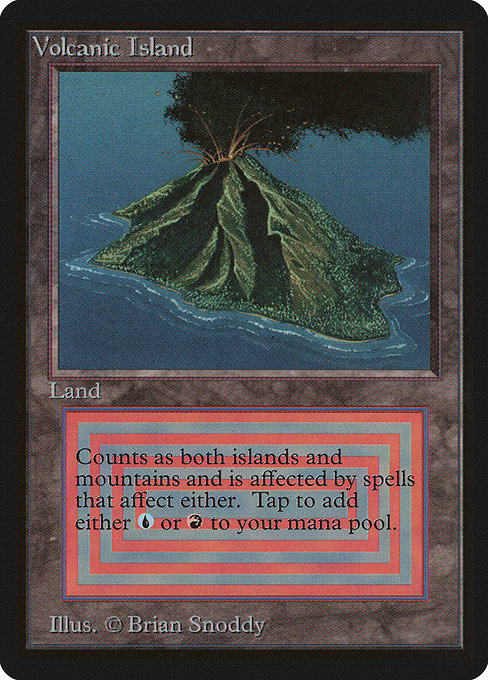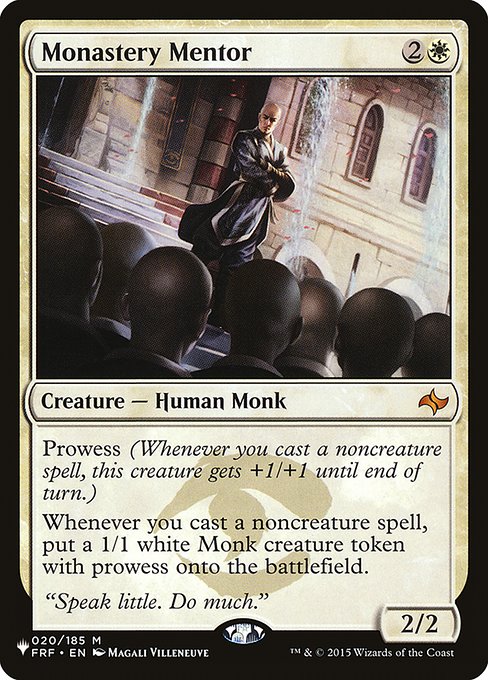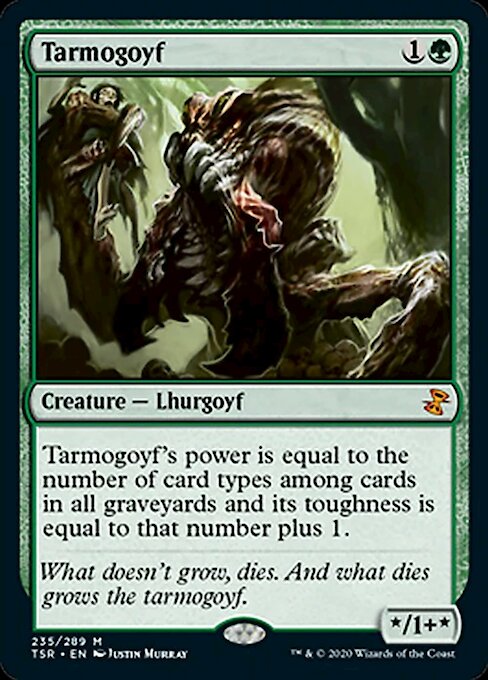Are you a Quiet Speculation member?
If not, now is a perfect time to join up! Our powerful tools, breaking-news analysis, and exclusive Discord channel will make sure you stay up to date and ahead of the curve.
When you compare individual card prices, Standard appears to be much cheaper than Modern and Legacy. When you factor in the amount of upkeep the format requires and the fact that rotation kills card prices, Standard ends up requiring much steeper investments.
At least when you buy a Volcanic Island, you can literally forget about it for years and it will generally trend upward in value. The same cannot be said for Desecration Demon:
The volatility of the Standard format kept me from investing too much in previous years, but with events happening so frequently these days, and my desire to track down a deck every time I want to play it diminishing, I have come to appreciate the value of having a large Standard collection.
Most financially focused articles here at QuietSpeculation are geared towards using your money to make the most of your collection, or even making more money. My focus today is a look at how to play Standard while bearing the least burden of Magic's most expensive format.
With constantly shifting metagames, having access to multiple decks can be paramount to Standard success. That said, there are some definite pitfalls to avoid when investing in Standard.
Be Consistent in What You Choose Not to Own
As we got deep into Theros Standard, it became apparent that the green decks would nearly all be playing Courser of Kruphix.
I missed the window to obtain Coursers at a reasonable price--that is, by the time I could purchase them, they would only ever go down in value. I had access to everything for multiple non-Courser decks, so it was wise for me just to avoid Courser altogether. In a format with any wiggle room at all, not owning the card is fine.
Not owning Courser freed me to not invest in cards that really only go in Courser decks.
For example, it was likely that Temple of Malady would almost always be seen in Courser decks, so I would only ever buy into Temple of Malady if I saw it as something I could flip for profit later.
A huge card that not owning Courser allowed me to avoid was Nissa, Worldwaker. Nissa was around $40 when we saw Goblin Rabblemaster start climbing to an absurd $20 for a regular rare, and there was some concern that Nissa might have a floor as high as $30 during her tenure in Standard.
With the buy-in being so steep and the demand for the card being so unclear, I felt good about not buying into Nissa, which ultimately ended up trending pretty consistently downwards from its early price.
Be Cautious in Determining Which Prices are Reasonable and Which are Hype Driven
With the sheer volume of events happening these days, it's quite common that there will be a weekend event near you the same weekend that a new Standard set becomes legal.
When Fate Reforged launched, I was liking Jeskai and Boros in Standard, and a card that might have revolutionized these decks was Monastery Mentor. That said, the card's preorder price was ludicrous, and there was no way that I could justify spending $30 on a card that I was unsure of.
By not buying Mentors immediately, I cost myself a short window of playing with the build of a deck I would have preferred. But I did save myself some money on a card that still hasn't proven itself entirely.
It was just so unlikely that it would ever be more than $30. And unless I was convinced that a Mentor deck was convincingly the best deck in Standard, then waiting on the card was just right.
Right after Fate Reforged launched, I wrote this piece looking at early prices and determining which seemed reasonable. The only card I think mis-evaluated was Ugin, but even still, there was never a great price to buy it at.
Ultimately, the takeaway from that piece was that Whisperwood Elemental was under-priced, and by correctly identifying what is priced incorrectly early, you can invest in those cards and use the profits to buy cards that don't ever have a window to be under-priced.
Keep a Close Eye on What You Own, and Move Things Early
As soon as you're comfortable in saying that you won't be playing a card in Standard, you should move off of it unless you otherwise believe that it will see a boom in price.
This is relatively common knowledge at QS, and Derek Madlem wrote a thorough piece on selling out of Theros here.
Of course, sometimes you'll want to sell a lot earlier than when rotation looms. Sometimes you'll see pretty outrageous spikes in the early weeks of a new set.
A great recent example of this was Master of Waves. Basically, everybody who wasn't selling the weekend of Pro Tour: Theros into $15-20 a card was on the wrong side of the table, as the card has generally trended downward since.
Even though Blue Devotion was the best deck that weekend, and always a strong choice from that point, it's just that important to recognize that prices immediately driven by Pro Tour results are often fleeting.
Know When You're Beat
A card I saw as underpriced in Ravnica/Theros Standard was Rakdos's Return. It was around $5 when Theros launched and was easily good enough for Standard. As a mythic rare, it seemed like a solid pickup. Well, despite seeing more and more play later in the format, there was never much demand for the card.
I now have a small stack of them at a price quite a bit lower than $5. I should've moved off of these long ago.
There's a point where things really only ever get worse. After Born of the Gods launched, Rakdos's Return only fell in price I should have sold out and mitigated my losses.
Always Buy the Expensive Reprints
Real-estate is a commonly highlighted element of good MTG specs. Lands are sometimes only okay, as we've seen with Theros Temples, but high-end reprints will always be avenues to make money when invested in near their reprint-floor.
Modern Masters is sort of its own beast, but I'm sure we are all aware of the long-term effect that we've seen on the price of Tarmogoyf and Cryptic Command.
Magic 2014 gave us a chance to double/triple up on cheap Mutavaults, Theros gave us a crack at cheap Thoughtseizes, and now Khans of Tarkir is giving us the opportunity to make some serious money on fetchlands.
It's hard to find something closer to a sure thing than when cards are still seeing demand in other formats while hitting a Standard floor.
These cards all had historic precedents of being very powerful, and they not only continue to be powerful in older formats, but are clear picks to do well in Standard.
Keep a Close Eye on Planeswalkers
Planeswalkers are the most powerful card type in Magic. There have been degenerate cards in the past in the form of instants and sorceries, but a well-designed planeswalker will be more powerful than a well-designed sorcery in the modern era.
Planeswalkers will often take a back seat in Standard as the format approaches rotation, as either format diversity or the format converging on 1-3 best strategies diminishes the appeal of particular cards.
Around the release of Journey Into Nyx you could find Xenagos, God of Revels and Ashiok, Nightmare Weaver were in the $5-6 range. These cards were constructed playable and stellar investments at that time.
Now and in the coming months is when we should be paying attention to Khans of Tarkir's planeswalkers. Sorin, Solemn Visitor is pretty widely played at this point in time and is a little too steep to buy into currently, but I'm taking note of Sarkhan, the Dragonspeaker.
Sarkhan has been trending downward for some time, and is approaching a floor. Picking this card up in the $6-8 range is basically guaranteed money. The reason that I'm such a believer in Sarkhan is that Ben Stark's Boros deck from GP Memphis is among the most powerful decks in Standard, and it maintains a lot of great elements after rotation.
Ben Stark Boros
The deck will definitely miss Chained to the Rocks, Goblin Rabblemaster and Stoke the Flames, but Outpost Siege is the truth, and this could easily become a Monastery Mentor deck. I fully expect to see a similar deck post-rotation packing some number of Sarkhans, which only gets better with Hero's Downfall leaving the format.
Sorin is also trending downward, but this has been happening much more slowly. I don't know that Sorin will have a window to fall into the range of being a great spec, but in the interest of maintaining a robust Standard collection, picking up a set when it hits its floor in the short-term will be a wise move.
Focus on Mythics, Pay Less Mind to Regular Rares
As we all know, it's tough to make money on regular rares in Standard. Sometimes you get a chance, and this usually comes up when something is in the bulk to $1 range and starts seeing serious play. The aforementioned Outpost Siege is a great example.
That said, most regular rares are just money sinks. My approach to owning regular rares is just to buy any that I need in the short term right before I need them. There's no point in owning Savage Knuckleblade if I don't think it will ever take off in price. If I ever decide to play Temur, I can buy them. But, until then, unless I have reason to believe that the price will shoot up, I choose to ignore the card.
Mythics are clearly more lucrative cards to target, and some of this is conveyed in the planeswalker section above. Mythics walk the same line with me only wanting to buy them if I'm going to need them or if I expect them to increase in value. The difference being that when mythic specs hit, they hit harder, are more expensive and difficult to track down in the short term if you need to play them.
Additionally, due to my low requirements for stock to play with, I don't mind as much when I buy into a mythic rare and the price only slightly increases. Buying a $10 card that goes up to $12 is much easier to convert into things that I need than buying a $1 card that increases to a $3 card.
With Fate Reforged, Whisperwood Elemental was a great example of a card to speculate aggressively on. It was better than a $5 card and a mythic rare. Currently, Warden of the First Tree is a card I would identify as being solid to pick up a set or two of. It's not a spectacular card, but it's a sub-$5 mythic that is likely to increase in value by a couple bucks while being unlikely to decrease much from its current position.
If the card turns out to be great with rotation, you'll likely have a decent window to pick up more copies aggressively. And, minimally, you'll have your own set to play with.
I have my eyes on Soulfire Grand Master and Monastery Mentor right now, but I don't see them maintaining their current prices long term, and I don't need them short term. It's hard to imagine they won't be role-players post-rotation, but I suspect there will be a better window to buy them in the future.
~
Standard is an expensive format with a lot of upkeep required. Hopefully the above tips help you approach the format in a way that helps to alleviate the burden of cost.
If you have any great tips about your financial approaches to Standard, I would love to hear about them in the comments. Let me know!
Thanks for reading.
-Ryan Overturf
@RyanOverdrive on Twitter


















